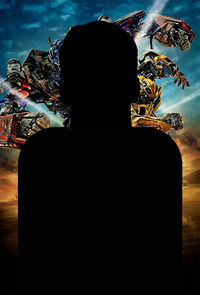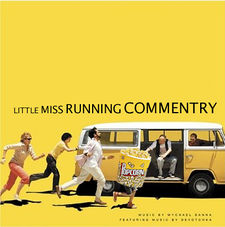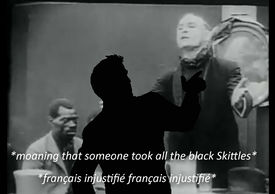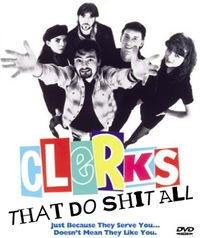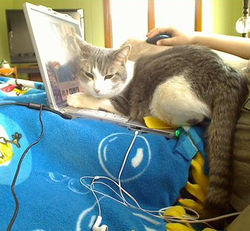Independent film
As Hollywood looks towards the future with high hopes, higher actors, and an ever-expanding silicon bill, an Anglo-American survey has found that the most popular film viewed in cinemas over the last year was instead an independent production, Back of Tall, Balding Man’s Head.
Independent film or indie film has long constituted the majority of global cinema going experience, the genre roughly defined as those films produced outside a major studio, with a small pool of amateur actors and heavy reliance on the harmonious qualities of the family-sized popcorn bucket.
This is because independent film runs on the idea that, instead of watching a big-budget film acted by A-list stars, people would instead prefer to indulge in the day-to-day concerns of the every-man, every-woman and every-screaming-child.
Though individual productions are usually viewed by very few, they, and their soundtrack performed by man with a simultaneously loud and contagious disease, are year on year outside favourite to clean up in all major categories at the Oscars and leave half empty Coke bottles in the minor ones.
Style[edit | edit source]
The entire duration of an independent film is viewed from behind the cover of a chair, usually decorated with crudely penned genitalia, and what is seen of the characters largely restricted. While the characters also remain unnamed throughout, by the conclusion of the film it is agreed that, in the words of Ebert, "...you could embrace that 20 square centimeters of thinning hair as your own family. At Christmas."
In a form of postmodernism, another, studio-produced movie may provide a backdrop for philosophical questioning ranging from "What just happened?" to "Does he die?". However the viewer is quickly reminded that they are not holding that ticket to see the Hollywood title printed on it. The viewer is instead there to hear the inner monologue of the indie characters, and the volume of their dialogue is adjusted sharply upward accordingly.
Most indie productions are deeply experimental, seeing how for they may go before capturing the accusing glare of the movie going public. An air of the art-house is usually embraced with the dimly lit setting, while a constantly flickering aisle light may be employed to starkly symbolize the laboured climbing over of both cultural norms and other paying attendees by the indie artist.
Plot[edit | edit source]
All modern narratives take on a quirky, slightly episodic nature, as one is given a look into the world of the protagonist as he attempts to both find a comfortable leaning position in the modest setting and consume a bag of foodstuffs in the loudest possible manner without it falling comically all over his lap. In the interests of entertainment, though, the bag will inevitibly pop in one of the most realistic M&M explosions ever put to film. Then will ensue a search for identity and the chocolates now melting upon his second, lower pair of cheeks.
The plot may also take the form of a romantic drama, as the hero will also attempt to awkwardly embrace his love interest or simply half-heartedly hold their hand, fighting to gain the acceptance of her armrest that just will not stay down.
Erotica is another genre embraced heartily, with many films focusing on the romantic experimentation of a young couple passionately ignoring decency, inhibition and several decades of gum, though curiously conscious of anyone that needs to be spoken to on a phone at a near shout. Crime films with large casts are not unheard of either, the Obnoxious Food Thrower trilogy possibly the most arresting of that genre.
There is significant depth of sub-plots in independent films also, wherein one previously minor character may command a minute of screen time as he shuffles slowly by, muttering apologies. Several minutes later the anonymous man returns to inch back in the opposite direction, now muttering both apologies and curses about tap water precision-guided to spray on his groin. "No film has captured the grand narrative of man in such a way," points out columnist Fiona Laughlin "...that the entirety of human progress has been to prevent the spillage of stuff onto groins, yet all we have done is make the spilling more efficient. The wisdom is there for all to behold."
Some works choose to embrace more abstract motifs, the most common being the unseen crying baby that plays during the tensest scenes, and doubly so if the projector is displaying something relating to sex; "...a clear condemnation of the corporate culture that prevents "insert baby here for refund" slots on condom dispensers," concludes Laughlin.
History[edit | edit source]
The Rameau opera Rear of Overly High Ornate Wig (1733) is credited as the earliest imagining of such a script, although Shakespearean scholars are quick to cite the play The Mouth-Breather of Venice as the true originator of the style due to the portrayal of a jumbo drinks combo as a pivotal character.
Rameau’s original work would take a candid look from behind at the exploits of a Royal playwright, namely tilting the wig to the right, cleaning out some earwax, just a bit to the left and finally a 45 minute aria of high-pitched snoring. The script underwent numerous modifications over time, from replacing all other musical instruments with straws, to libretto entirely composed of "why are zhey doing zhat?"
During the early 20th century, industrious stadium owners would create their own adaptations of the classic opera as cultured halftime, full-time and in between time entertainment, the shorter versions set to showtunes and the sound of inflated food-stall prices passing overhead. This tradition would live on, and the costumed pantomime Ass of Drunk Guy Who Won't Sit Down, Stop Shouting, remains one of the most viewed spectacles across all sporting events, a distant second to abusing the referee.
D. W. Griffith is regarded as the first genuine indie filmmaker, traversing the land for many years in search of the most offensive things he could take to cinema. To this end he would settle upon laughing loudly at the most inappropriate time and the KKK, the latter satisfied in his feature film The Birth of a Nation (1915) while the former would be expertly portrayed in a prelude to the first screening of the feature, acted entirely by himself, that ruined the conclusion for everyone else. This style would influence all later independent artists and Griffith is fondly remembered today for his massive contributions to story telling within films, even after being elbowed in the ribs.
As the moving image became more popular, Charlie "I don't follow plot lines well" Chaplin, Mary "Seat Kicker" Pickford and a colicky 3 month old would jointly found United Artists in 1919 to protect the work of indie artists. Indeed, so successful was this arrangement, it is unclear whether Chaplin actually starred in any studio films at all or simply managed to attend every global movie screening from 1915 to 1930, spill a frozen drink on his lap and waddle comically out, spinning a cane into the face of anyone prone to running in fast motion.
Reception[edit | edit source]
The popularity of independent film spreads across all demographics, extends over most niches and hogs the armrest in several psychographics. Thus there exist a diverse range of festivals across the world for the gathering of indie actors to showcase, celebrate and perfect their art in close quarters. These “concerts” as they are known are however frequently interrupted by inconsiderate people playing music on a stage.
Indie film has generated particular fervor among contemporary Anglo-American families, largely explained by its unique position as the only current movie genre simultaneously lacking talking animals and cleavage. Much of this enthusiasm has been directed towards gaining children staring roles in light of the inexpensive and attention grabbing nature of indie film, and the genre has been a reliable springboard for many a young actor to bigger and better things. Indeed, Christian Bale would give his breakthrough performance in Pissy Little Kid Crying For a Choc-top (1979) and also star in the 30th anniversary remake. The 2009 survey concluded the average child had starred in 2.7 independent films in the past year and seen 5.3 more, a trend expected to be maintained so long as Disney holds the rights for every biotic species.
The genre has been integrated with many other sectors of the entertainment industry and the signature tune of most modern independent films Absolutely annoying preset ring-tone number seven remains the nation’s most popular preset ringtone number seven. That is not to say indie film is free of controversy though, with the 1985 medical drama Fat Woman Who Breathes Really Really Loudly condemned for its use of a huge sneeze, seen as too intense for a PG-13 film and edited out in favour of a choking-cough into a tissue.
Many actors who wish to remain anonymous, mainly because they are Tom Cruise, have expressed their admiration for the style and professed a desire to act in a production if asked, despite having performed in one for nigh on 48 years without being asked, accosted, requested or queried.
Future[edit | edit source]
Near constant technological advancement has been a challenge to independent film. One such example seen in the Home Video market is the interactive audio extra Telemarketer who Calls the Moment You Press Play, now found bundled into the special features of every DVD. Other, more adventurous, independent films have embraced newer production techniques, such as replacing traditional lighting with either mobile phone or iPod screens set to blind mode, as showcased in the forthcoming series Ponytail of Lanky Teen Girl Who Spends Entire Time Texting, with the media abuzz as to who the hell will keep on playing that role.
Of course there is a chance humans may stop thinking what they have to say or do is more entertaining and enlightening than anything made by those with studio backing and many years of experience, thrusting independent film into a silent and irreversibly downward spiral of respect for others.
In light of this, it is safe to say independent film will continue to deliver groundbreaking portrayals of arrogance, unmatched by anything seen outside of politician's pin-stripe jacket and pastel tie, until way beyond the climax of time.
Not the credits though.
No one stays for them.
